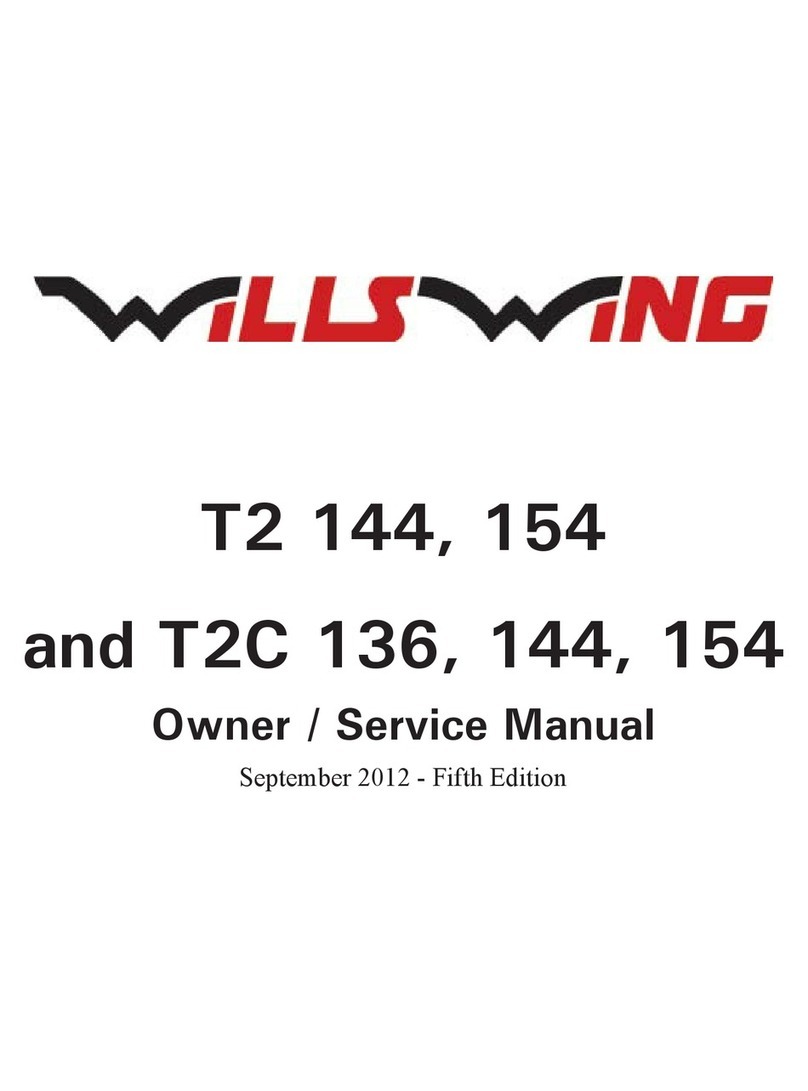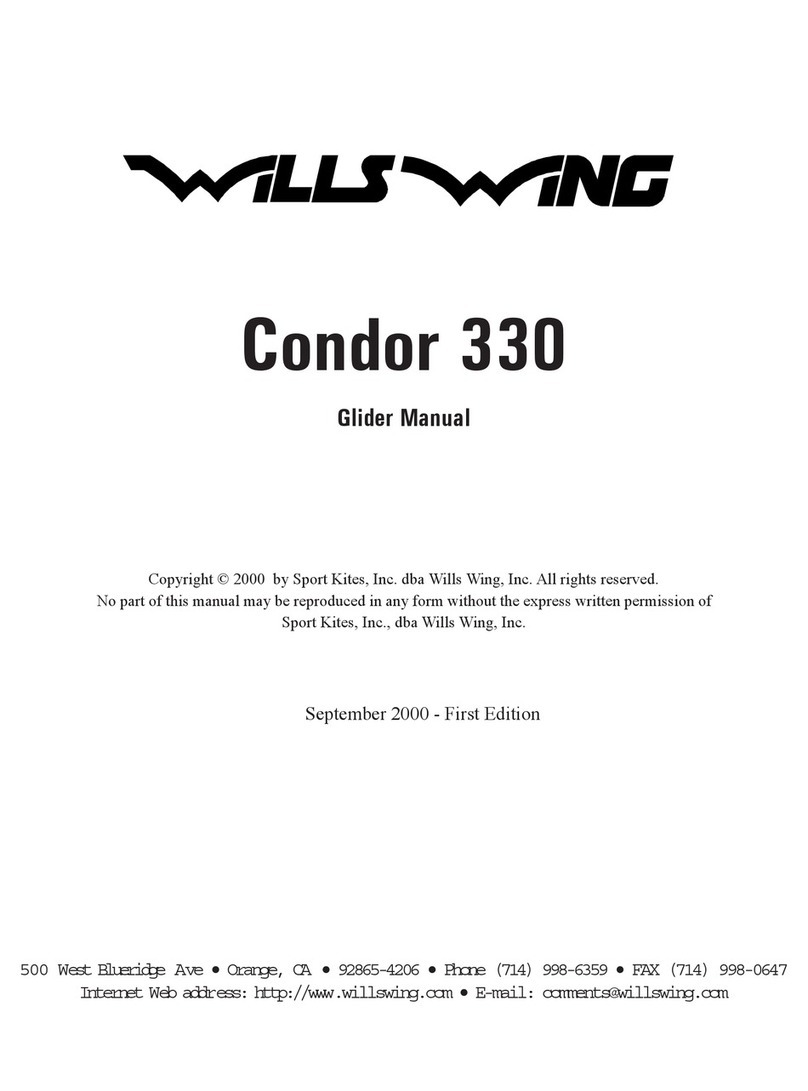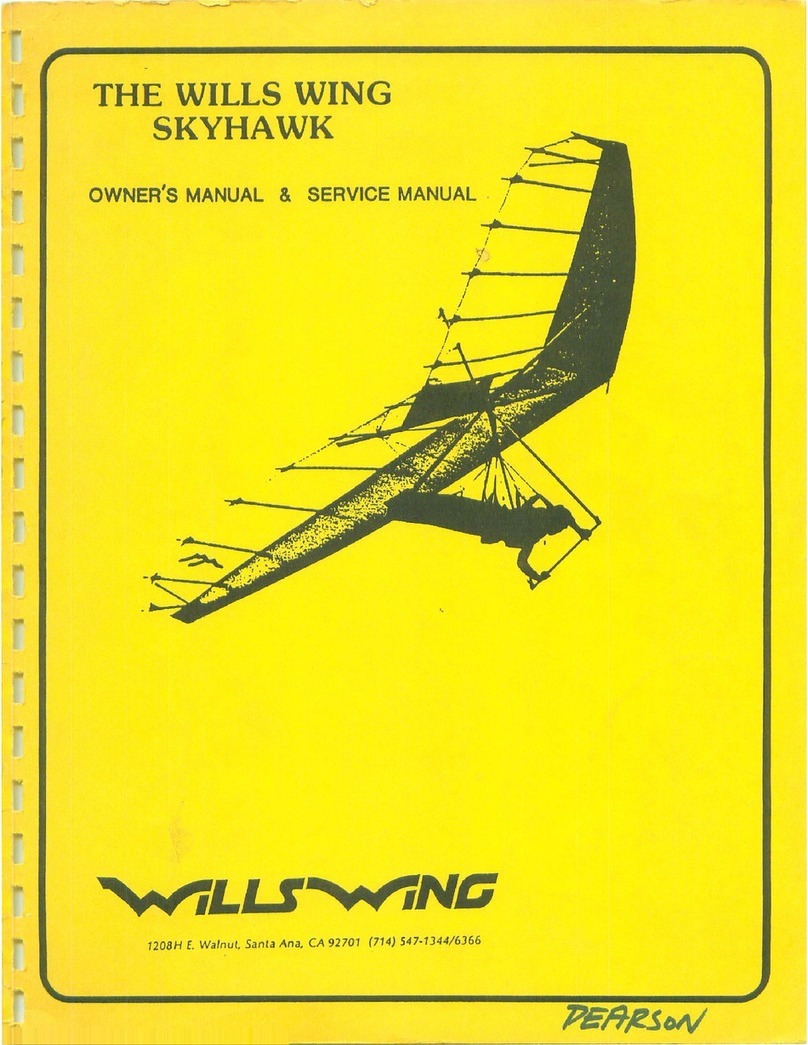
5
3) A negative 150 degree angle of attack load test at a speed equal to at least the
greater of 30 mph or 50% of the required positive load test speed for at least 3 seconds
withoutfailure.
The required speed for the RamAir 154 and 146 for this test was 37 mph.
4) For the RamAir 154 and 146, with a Vne of 60 mph, pitch tests at speeds of 20 mph,
40 mph and 60 mph which show the glider to be stable over a range of angles of attack from
trim angle to 20 degrees below zero lift angle at 20 mph, and from trim angle to 10 degrees
below zero lift angle at 40 mph, and from 10 degrees above zero lift angle to zero lift angle
at 60 mph.
5) Flight maneuvers which show the glider to be adequately stable and controllable
throughout the normal range of operation.
NOTE: The RamAir 154 and 146 have been designed for foot launched soaring flight. They
have not been designed to be motorized, tethered, or towed. They can be towed success-
fully using proper procedures. Pilots wishing to tow should be USHGA skill rated for towing,
and should avail themselves of all available information on the most current proper and safe
towing procedures. Suggested sources for towing information include the United States
Hang Gliding Association and the manufacturer of the towing winch / or equipment being
used. Wills Wing makes no warranty of the suitability of the glider for towing.
Flight operation of the RamAir should be limited to non aerobatic maneuvers; those in which
the pitch angle will not exceed 30 degrees nose up or nose down from the horizon, and the
bank angle will not exceed 60 degrees. The RamAir is generally resistant to spinning, but will
spin from a stalled turn if the VG is adjusted at or near the tight end of the range, and the
rate of application of pitch is moderately rapid. The RamAir can be induced to spin at any
VG setting. Recovery from a spin requires unstalling of the wing, and it is therefore critically
important that in the event of a spin, no application of nose up pitch control be held. The
RamAir will recover from a spin once control pressures are relaxed. As the nose lowers and
the angle of attack is reduced, the stall will be broken and the spin will stop. However, such
recovery will consume significant altitude, and will result in the glider assuming an unpredict-
able heading. Recovery from a spin may therefore involve a flight trajectory which intersects
the terrain at a high rate of speed. An aggravated spin could result in loss of control, in flight
inversion, and structural failure. Therefore no attempt should ever be made to deliberately
spin the glider. The RamAir provides the pilot with a high degree of pitch authority, in combi-
nation with a very low twist sail. As a result, it is possible by pushing fully out on the bar to
produce a very aggravated and severe stall, the recovery from which may involve very
severe pitch down rotation, the pilot going weightless, and the glider recovering via an unpre-
dictable trajectory with a significant altitude loss. Therefore, full arms extension aggravated
stalls should not be induced except on landing flare.
The maximum steady state speed for a prone pilot in the middle of the recommended weight
range full forward on the control bar with the VG set full tight is approximately 63 mph for
the RamAir. The placarded speed never to exceed for the RamAir is 60 mph. This speed will
be achieved with the control bar basetube approximately two inches below the waist.
Theplacarded maximum maneuveringspeed, andthe placarded maximumrough air speed
of the RamAir are each 52 mph. This speed will be achieved with the control bar basetube





































